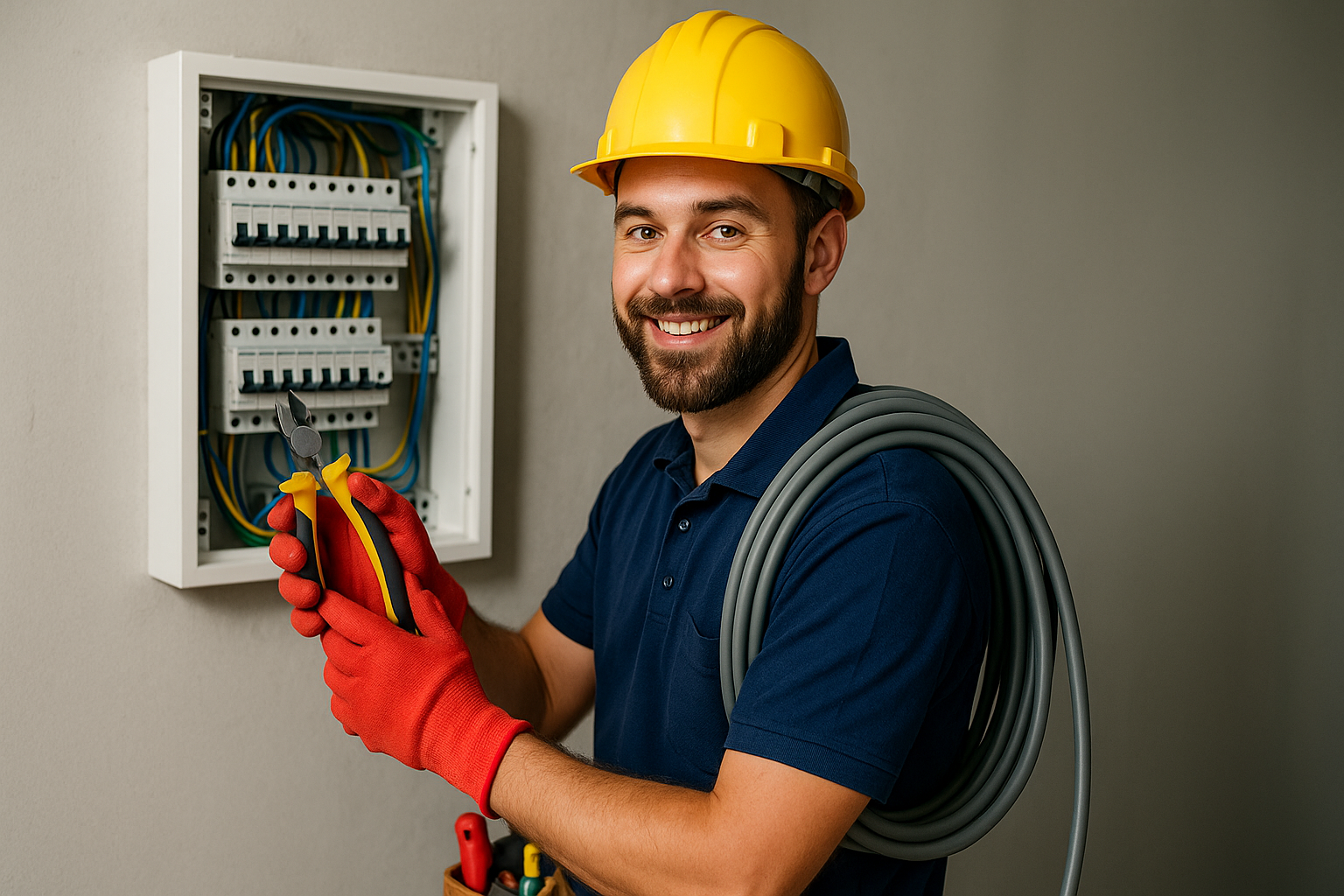Electricity is one of the greatest conveniences of modern life – powering our lights, appliances, devices, and more. But it also comes with risks. One of the most dangerous and often overlooked hazards in a home is the threat of electrical fires. These fires can start suddenly, spread quickly, and cause devastating damage to property and lives.
A thousands of residential fires every year are caused by electrical issues, many of which are preventable. The good news is that with proper awareness, regular maintenance, and safe practices, you can significantly reduce the risk.
Here’s a complete guide on how to prevent electrical fires at home from everyday habits to important safety upgrades.
Inspect and Maintain Your Electrical System Regularly
Just like any part of your home, your electrical system needs regular attention. Wiring, outlets, and circuit breakers can deteriorate over time, increasing the risk of overheating and fire.
What to do:
-
Schedule a professional electrical inspection every few years, especially if your home is more than 20 years old.
-
Have your system checked immediately if you notice flickering lights, frequently tripping breakers, or outlets that feel hot.
-
Replace outdated or damaged wiring and panels. Old systems may not be designed to handle modern power demands.
A small investment in regular maintenance can prevent major problems down the line.
Avoid Overloading Circuits and Outlets
One of the most common causes of electrical fires is overloading outlets or circuits. Plugging too many devices into one outlet or using multiple power strips on the same circuit can generate more heat than your wiring can handle.
Safety tips:
-
Plug only one high-wattage appliance into an outlet at a time.
-
Use extension cords and power strips sparingly – they’re for temporary use, not permanent solutions.
-
If you frequently rely on extension cords, have an electrician install more outlets.
-
Never daisy-chain power strips (plugging one into another) – it’s a major fire hazard.
When a circuit is overloaded, the wires behind the wall can overheat and ignite surrounding materials like insulation or wood framing.
Replace Damaged or Frayed Cords Immediately
Damaged cords are one of the easiest things to overlook and one of the most dangerous. Frayed, cracked, or exposed wires can cause sparks, short circuits, or even ignite nearby objects.
What to do:
-
Inspect all cords regularly, especially those hidden behind furniture or under rugs.
-
Replace cords with visible wear and tear immediately.
-
Avoid running cords under carpets or rugs – they trap heat and can easily ignite.
-
Never tape or patch a damaged cord as a “temporary” solution.
If you have pets that chew cords, consider using cord protectors or covers to prevent damage.
Use the Correct Wattage for Light Bulbs
Light fixtures are another common source of electrical fires, often because people use bulbs with wattages too high for the fixture’s rating. This can overheat the fixture and surrounding materials.
How to stay safe:
-
Always check the maximum wattage rating printed on your light fixture and use bulbs that meet or are below that number.
-
Consider switching to LED bulbs, which use less power and generate less heat.
-
If a fixture becomes unusually hot to the touch, turn it off and have it inspected.
Something as small as a mismatched bulb can create a dangerous situation if ignored.
Install Ground Fault and Arc Fault Circuit Interrupters
Modern electrical safety devices can significantly reduce the risk of fires. Two important types to consider are Ground Fault Circuit Interrupters (GFCIs) and Arc Fault Circuit Interrupters (AFCIs).
-
GFCIs shut off power when they detect moisture or a ground fault. They’re essential in areas like bathrooms, kitchens, basements, and outdoors.
-
AFCIs detect dangerous arcing (sparks caused by loose or damaged wiring) and shut down the circuit before a fire can start. They’re especially useful in bedrooms, living rooms, and hallways.
If your home doesn’t have these safety devices, talk to an electrician about upgrading your panel or outlets.
Unplug Appliances When Not in Use
Even when turned off, many appliances continue to draw power and if something malfunctions internally, they can overheat and start a fire. Unplugging devices when you’re not using them is an easy way to reduce risk and save electricity.
Appliances to unplug:
-
Toasters, coffee makers, and other small kitchen devices
-
Chargers for phones, laptops, and tablets
-
Space heaters, fans, and hair dryers
Also, avoid leaving devices running unattended, especially high-heat appliances like ovens, dryers, or portable heaters.
Keep Flammable Materials Away from Electrical Devices
It might sound obvious, but many house fires start because flammable items are placed too close to heat-generating electrical devices. Curtains, bedding, paper, and cleaning products can all ignite quickly.
What to do:
-
Keep at least three feet of space around space heaters and heat-producing appliances.
-
Don’t store flammable liquids near outlets, panels, or appliances.
-
Make sure cords and plugs are not covered by fabric or clutter that could trap heat.
A clear and clutter-free environment around electrical devices is one of the simplest ways to prevent fires.
Update Old Wiring and Panels
If your home is more than 30 years old and hasn’t had an electrical upgrade, it may be at a higher risk for fires. Older wiring materials degrade over time and may not meet modern safety standards.
Warning signs you may need an upgrade:
-
Frequent tripping breakers
-
Flickering lights
-
Outlets that spark or feel hot
-
Use of multiple extension cords due to a lack of outlets
Upgrading your electrical panel and wiring ensures your system can safely handle today’s devices and appliances – reducing the risk of overheating and fire.
Be Cautious With Space Heaters
Portable space heaters are one of the leading causes of electrical fires in winter. They draw a lot of power, and if used improperly, they can overheat or ignite nearby objects.
Safety tips for space heaters:
-
Plug them directly into a wall outlet (never a power strip or extension cord).
-
Keep them at least three feet away from anything flammable.
-
Turn them off when you leave the room or go to sleep.
-
Choose models with automatic shut-off features.
Have Smoke Alarms and Fire Extinguishers Ready
Even with all precautions, accidents can still happen. That’s why it’s essential to have working smoke detectors and fire extinguishers in your home.
Safety checklist:
-
Install smoke alarms on every level of your home, inside bedrooms, and near the kitchen.
-
Test alarms monthly and replace batteries twice a year.
-
Keep a fire extinguisher near high-risk areas like the kitchen and electrical panel.
Quick detection and response can prevent a small electrical issue from becoming a full-blown disaster.
Prevention Starts With Awareness
Electrical fires are scary, but they’re also largely preventable. Most incidents are caused by problems we can control – overloaded circuits, damaged cords, outdated wiring, or unsafe habits. By paying attention to warning signs, practicing safe habits, and keeping your electrical system in good condition, you can greatly reduce your risk.
Remember: safety is about prevention. Schedule regular inspections, unplug devices when not in use, and upgrade your home’s wiring if it’s outdated. With these steps, you’ll protect not only your home and property but also the safety and well-being of everyone inside.

